Birqash camel market
Visual Sunday
It is dawn on a Friday morning, but traders from all over Egypt have already gathered in Birqash. All of them are in the galabiya, even the boys — sons of the traders. Armed with wooden sticks, they herd camels into the market by beating, swatting, hissing, tsking and yelling. There is a chaotic method to this routine, and yet once the merchandise reaches their designated storefronts, they are lamblike, even with one front leg awkwardly bound.
This market operates on trust. Adult camels sell for about 11,000 Egyptian pounds, and young ones slightly less than half that. All transactions are in cash. If you are a butcher, you have eight days to sell the meat and pay off the debt. Otherwise, you are asked to lay down hard cash immediately. Payments are facilitated through a small office in the market, where records are hand-written in a tattered notebook. Business here is old-fashioned, but everybody operates under the same rules. There is a familial ethos in this place. Disagreements only occur when bargaining on the price of a camel. Arguments almost never arise.
By noon, plenty of camels have been sold and trucked off to various butcher shops, mostly in Embaba, one of the poorer neighbourhoods in Cairo. For an unknown reason, camel meat is considered to be of lower quality than beef. The traders remain in the market with their camels, but in fact, the rest of the day is spent drinking tea and trading stories. Despite the dry heat and the dust, compared to their days on the road when they are herding, this is a brief respite.
As I leave Birqash, I walk by a corpse. Some camels don’t survive the trek from Somalia or Sudan, or contract illnesses on the way and are put down. To my right, a camel is beaten until it dances as buyers yell out their bids. To my left, a hole-in-the-wall restaurant serves up fuul and ta’ameyya for visitors and residents alike. The people here are here for business, and nothing else. They will be back next week, sitting on the same perches, drinking the same tea, telling the same jokes.
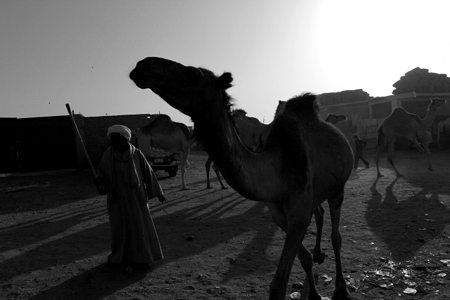
The camel market begins to buzz with activity early in the morning. Many sellers arrive before dawn to prepare their stock for viewing.
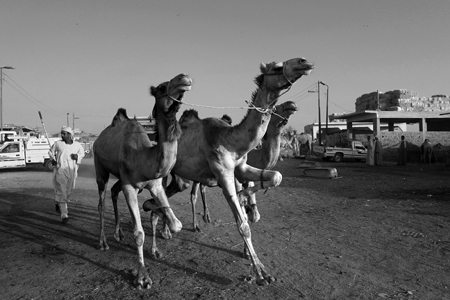
Camels are herded into the market in twos or threes, often with one front leg bound to hinder their movement.
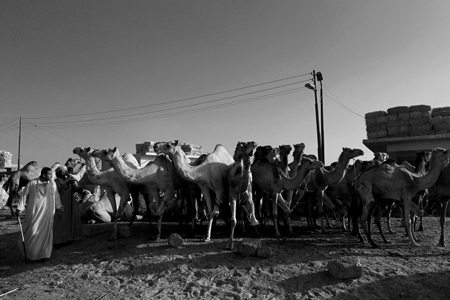
Most camels are docile and do not attempt to escape. Some sellers claim that camels from Sudan and Somalia are very well-behaved, while Egyptian ones like to put up a fight.
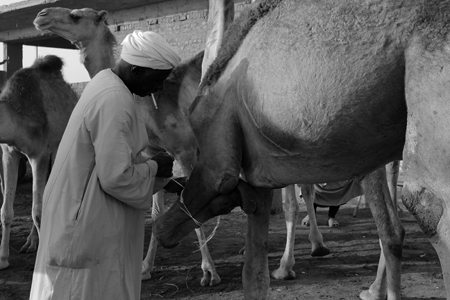
A Nubian seller from Aswan binding the front leg of a camel.
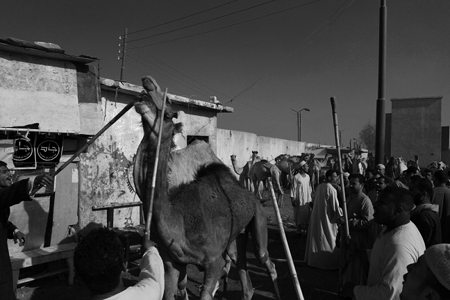
The camels are not just put on display for the buyers. Oftentimes, young men and teenage boys form a ring around a camel and beat it with sticks. This makes the beast whirl around in some sort of dance, like a dervish. Buyers yell out their bids as this goes on.
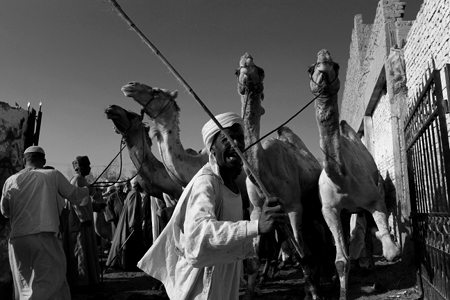
The traders are all about business. Get in their way, and you might just get trampled over.
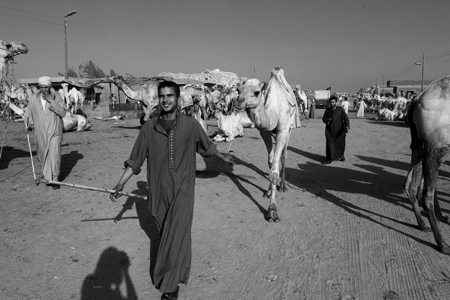
A man leads a sold camel out of the market for loading. Camels that have been sold have the initials of their buyers spray-painted on their sides.
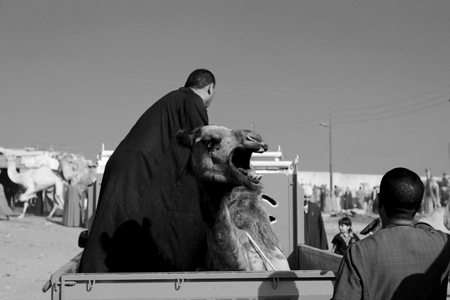
A tear can be seen trailing down this camel’s face as it is loaded onto the back of a pickup truck. It will most likely be slaughtered for its meat.
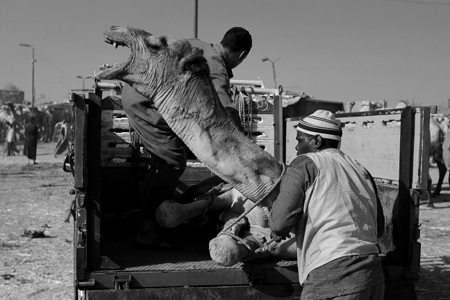
Another camel bound and on its way to the butcher shop.
Text edited by Aidan Mc Mahon and Laïla von Alvensleben.






